I began the process of the 3D construction of Galatea of the Spheres last week. As I mentioned before, the process is quite simple as it only uses spheres for the most part. For now, I am looking past the small squiggle geometry that represents hair. I copied the sphere in a grid system to mimic that of the painting. I set a camera up pointing directly down the center of the grid (matching the painting’s viewpoint), and I placed the spheres by watching this camera in a separate window. I projected an image of the painting with a spotlight. It hit a plane the spheres were touching so I could properly match them up. I put the plane’s transparency rigged to a slider so I could go back and forth to see the spheres behind the front surface.
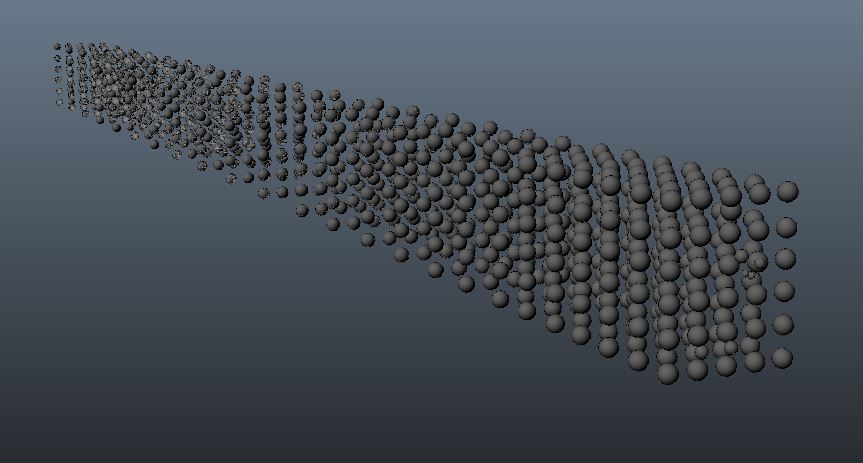
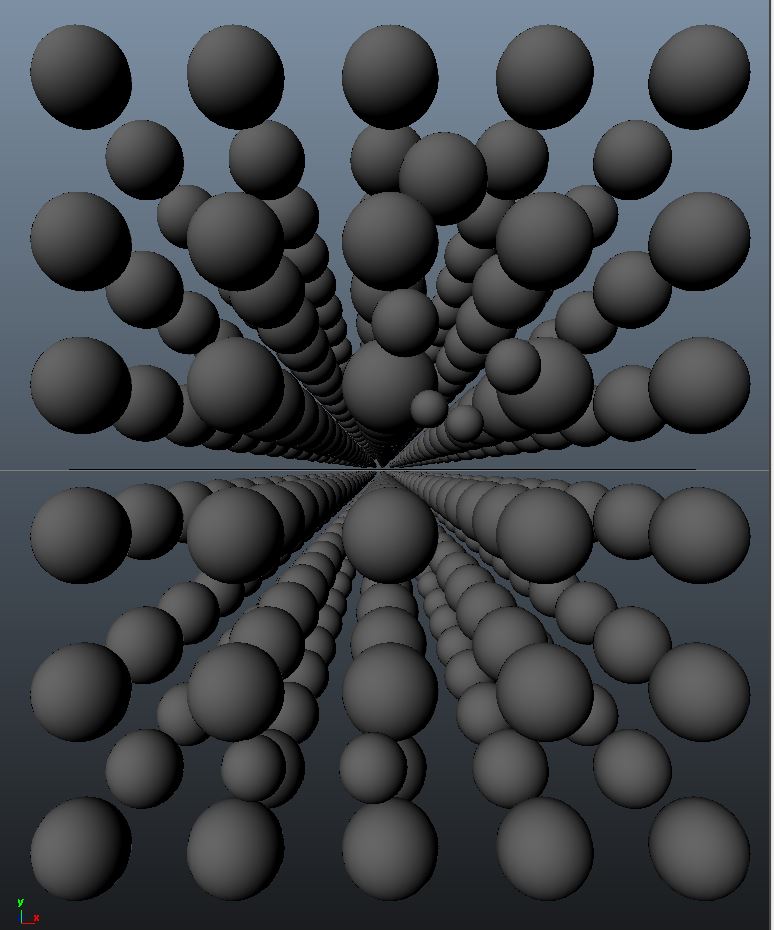
I tried to maintain equidistant placement, as suggested in the painting. I would first take one sphere, and move it directly backwards until it lined up with the sphere depicted in linear perspective in Dali’s painting. Using the camera’s default Angle of View attribute, Dali’s perspective is nearly dead on. However, moving a horizontal row downwards only in the Y axis in equidistant spacing, the rows seem to be a tad off; almost crooked. I really didn’t want to nudge some of the sphere into place, because with linear movements down rows and columns, these would be noticed in a seamless loop. I decided to keep them in the perfect grid. I should note that Dali’s vertical columns of spheres could, in fact, be perfect and not skewed as shows in my scene. I have to remember that I am using a photograph of the painting. Unless the photo was taken in the absolute dead center of the depicted viewpoint, there will be some foreshortening. In this photo, I believe the camera was slightly below, because the left edge of the spheres tilts to the right, suggesting that it is moving towards a vanishing point that is upwards versus halfway between. Think of viewing a skyscraper from below, the top is narrower in perspective, causing one edge to look as if tilted inward.
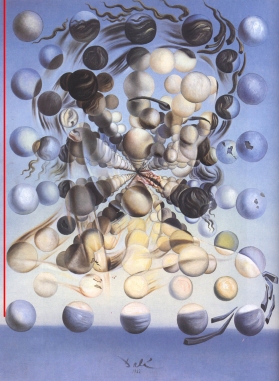
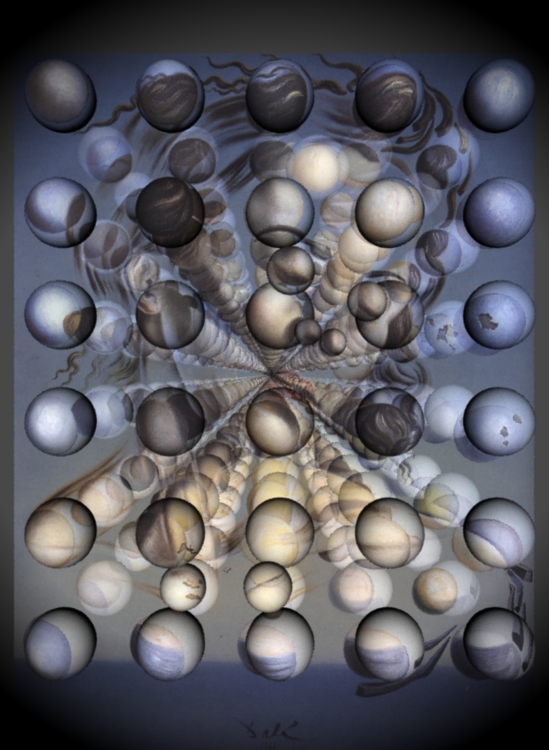
From here, I took an entire panel or vertical cross section and copied it back in equidistant until the depth seemed to go on forever. I did increase this distance slightly as it got far enough back so to save a bit of processing and reduce the total number. At some point the eye cannot notice the difference and at enough depth the spheres seem indistinguishable. I originally wanted to use motion paths to move the spheres around, but decided it would be very difficult to maintain a curve that was linear in some spots and curved in others and also intersected the centers of the spheres. Instead I set up them up for a seamless infinity loop, where the first and last frames of the animation are the same and when duplicated in compositing, it appears to cycle continuously and any amount of duration can be set. The actual render would only be 1 second (30fps) and save a lot of time.
I observed the painting and started mapping paths that the spheres could move, mimicking the suggested flow in the image. I would go through a series of them, select, and assign a color to observe the spacial relationship between them and keep track of them for keying.
I color coded the flow of the collarbone, up the neck, and 2 hair flows. I would select these in the straight-on camera that mimicked the painting so I was sure it was the correct sphere. Here is the flow:
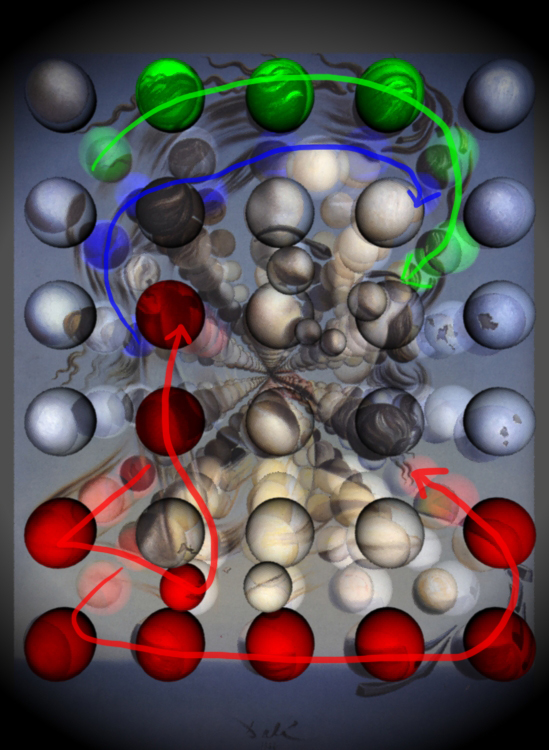
An interesting view of this is the 3D perspective in another location:
Note the white spheres is where her nostrils and eyes are.
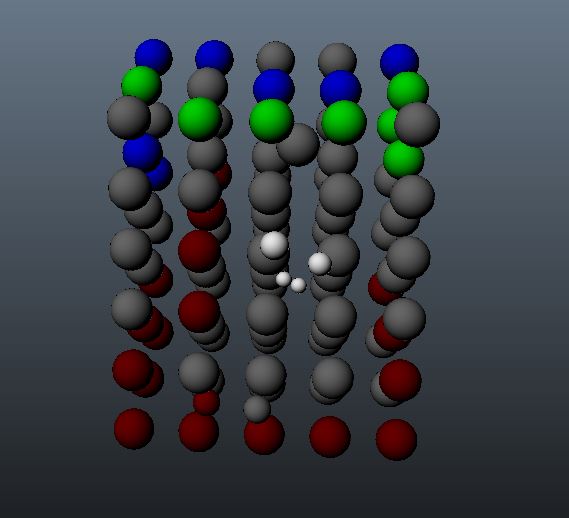
It certainly demonstrates some depth in this. The interesting part is that I am not choosing by my will which spheres are part of the motion; the selection comes directly from the painting matching with that sphere, so this really does depict the depth of suggested movement throughout by Dali. It is very interesting to see how he is suggesting these curved paths on a 2D surface, but also integrates them into a 3D environment. Rather than using spheres on the same XY plane, he uses depth, the Z position to convey the X and Y position.
In summary, there are 2 subjects of interest going on in this painting, the 2D face of Gala, and the depicted 3D grid of spheres (referencing atomic structure). So he is taking the depth of the 3D space to reference some of the positioning in the 2D. For example. the hair does not simply flow from one sphere in the same XY plane to the next, it weaves forward and back making use of the Z axis. The effect results in the one point perspective and 2D surface only communicating an X and Y position and that is where they can come together to form the 2d reference of the face.
This is very complicated in my head but clear at the same time. It is more complicate to communicate than anything. I should also note that this is more about taking advantage of the 3D medium again, and not necessarily motion.. Motion was the reason that I evaluated it, but 3D was the tool that let me realize this. The last image was really the one that got me to say, “okay I didn’t realize that before, what could its significance be..?” Regardless this investigation and discovery is very exciting, and I am thrilled that the experiment is producing similar results to the Horatii.